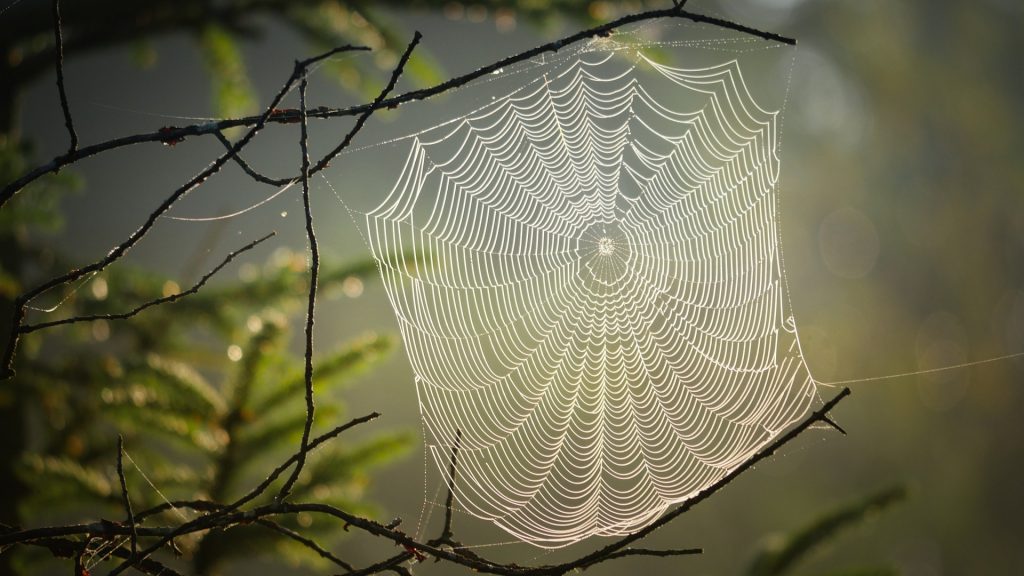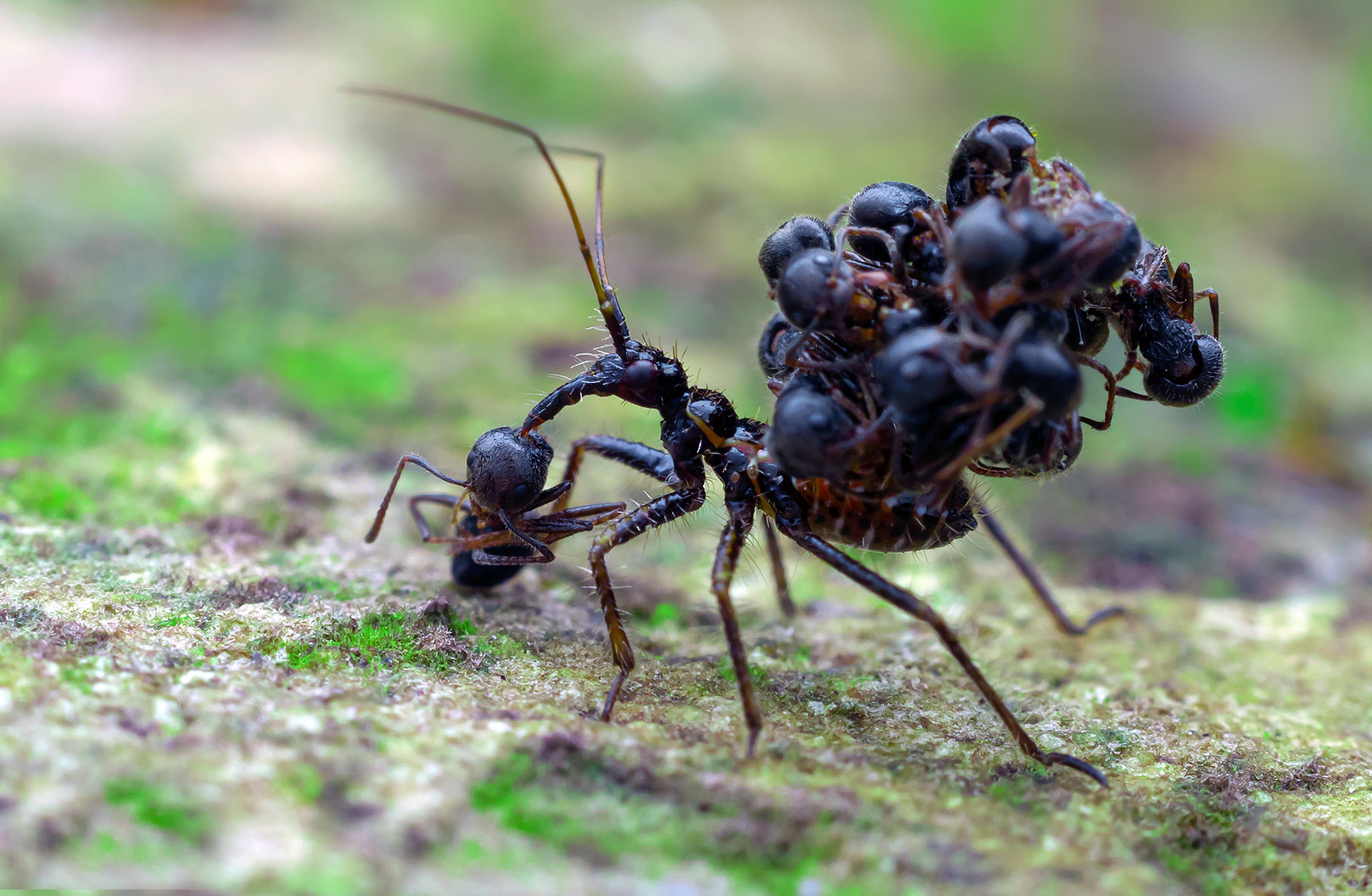Insects That Eat Ants
There is nothing on earth that is without an enemy, the same applies to ants. Ants consist of some of the most formidable and plentiful creatures on earth that use their huge numbers to defend themselves from both small and large attackers.
These eusocial insects usually live underground in colonies. It is estimated that there are more than 12000 different ant species across the world. While humans consider ants as pests, they are a nutritious and delicious meal to many insects.
What insects eat ants? Some common insects that regularly eat ants are spiders, flies, beetles, wasps, butterflies, and antlions. Surprisingly, some types of ants feed exclusively on other ants species. For instance, army ants are known to consume the larvae of some other ant species, and some fire ants feed on other fire ants. Naturally, there are many more ant predators that feed on ants but these are the most common ones.
Ants comprise a major source of nourishment for many insects, which constitutes one of the natural ways of controlling ants populations. In the following sections, you can read more about these insects and the unusual ways they feed on ants. It is really an interesting read. Let’s start!
Ant Predators: List of Insects That Eat Ants
Ant-Mugging Flies (Milichia Patrizii)
Just as their name implies, ant-mugging flies have a tendency of waiting for ants and literally rob them of food. They use their weird clamp-like antennae to hold ants tightly, thereby making it easy to fulfill their mission. By using its tubular mouth, an ant-mugging fly forces the powerless ant to spit up due to the effect of its tapping imitation.
These flies usually learn to imitate some signal that is used by ants to stimulate regurgitation. When the ants spit on the mouth of the mugging fly, the fly goes away with the stolen food leaving the ant in a shocking mood. In cases where an ant fails to respond as expected or its attacked by many ant-mugging flies, it ends up being eaten as well.
Ant-Eating Spiders

Spiders are arthropods with eight legs belonging to a class known as an arachnid. There are over 40,000 species of spiders across the world. Most of the spider species feed on ants anywhere they can locate them.
Some of these species are jumping spiders, lynx spiders, and black widow spiders. Usually, they weave webs that end up trapping ants. When the ant taps on the web, it is nabbed by the spider silk in the web. The spider feels the vibration as the ant struggles to escape and quickly goes to eat the ant that has been caught.
While some spiders make webs all around them, others do not. Instead, they lay in wait and jump quickly on any approaching ant. Once caught, the ant is killed and feed on.
Phorid Flies
These fly species usually look like fruit flies but their eyes are not red in color. Their thorax has a high arch unlike that of the fruit flies. These insects are natural enemies of fire ants. A Phorid fly swoops down and injects its eggs into a fire ant, specifically in the thorax.
As the larva grows to become pupae, the ant’s tissues degenerate and eventually, it dies. The young Phorid fly begins to find its way out by eating the ant inside out. Due to the fact that a Phorid fly preys on ants, they are used as pest control against fire ants in some parts of the world.
Antlions and Doodlebugs
Antlions are flying insects that exclusively feed on ants. As their name suggests, they are metaphorically termed as hunters or destroyers because they fiercely prey on the ants.
Doodlebugs are the larva of antlions. They are called doodlebugs because they leave behind doodles on the sand when they excavate pits, which act as their hiding places for trapping passing ants. If an ant enters the pit, the doodlebug grabs and eats it.
These ant predators are nocturnal. This means that they are active at night and are rarely seen during the day. Usually, antlions reside in sandy and dry habitats. These places make it easy for the larvae to make pits on the ground. Nonetheless, some larvae also live under debris.
Eucharitid Wasps
This species of wasps have a somewhat weird way of life. The female wasps lay their eggs on leaves or branches. Once the larvae emerge, they often fall on the ground. The larvae then attach themselves to the passing ants and are taken inside the colony. Once they are among ants, they find their way into the brood’s chamber where they begin feeding on the young ants.
Since the Eucharitid wasps take on an odor that is similar to that of ants, they easily get away with this trickery behavior. The wasp’s larva feeds on the brood until maturity, after which they begin to kill and eat ants.
Larva Mimic Fly
The adult female fly of this species looks like a maggot. This fly does not have wings and has a huge abdomen. On the contrary, male flies have wings. These flies eat ants including their food.
Sometimes, when they invade ant colonies, they just eat their foods without harming ants. Other times, they eat anything they find on their way including ants. The males move from one colony to another mating with other flies.
Paussines
Paussines or ant nest beetles usually live within the nests of their prey – ants. They have a variety of acoustical, chemical, and morphological adaptations that make them well suited for this lifestyle. Their live habits range from living freely with ants to preying on them.
Ant nest beetles find their way into ant colonies by acting like them. By distorting ants’ communication system, they not only live among ants but also prey on their brood.
They have a defensive chemical, which they usually release when attacking ants. Over the years, Paussines have diversified rapidly as they respond and adapt to different types of ants.
Blue Butterfly

This beautiful butterfly preys ants by masking its larvae with ants’ smell. In doing so, the butterfly makes ants believe the brood are their own. Consequently, the ants carry it to their nests for care. The larvae mimic both the sounds and scent of the queen ant and because of that, they are accorded royal treatment in the colony.
The larvae are fed effectively by the ants and this makes them grow very fast. These butterflies live in ant nests for up to 11 months. During this period, they continue to feed on ant grubs. In the end, they kill ants in large quantities and feed on them.
Bombardier Beetle
Ants make up a significant portion of this predatory beetle’s food. Unlike other insects that trick ants to feed on them, Bombardier beetle storm ants’ territory and gobble them. These predators use their legs to kick any ant that stands on their way.
As they feed on ants, these beetles extract some formic acid from them and use it to defend themselves from their predators. When threatened, Bombardier beetle sprays the acid into the eyes of the attacker.
Moth Butterfly
This butterfly species is found in some parts of the world including South Asia, Southeast Asia, and Australia. Like some predators on this list do, the larva of moth butterflies feed on ant larvae. However, they find their way into ants nest and eat the brood in a different style.
Female moth butterflies lay their eggs mostly in the nests of tree ants. When their larva comes out, it appears like an oval, flat slug, and has a heavy and hard outer shell. This makes it impossible for soldier ants to either flip it over or bite it. Thus, the larva can freely feed on young ants until it becomes a butterfly.
Other Ants
It is astonishing that some species of ants are enemies of other ants. Different colonies and species of ants are in constant rivalry with one another. As each species tries to outdo the other, some ants enslave, raid, harass, or even kill others.
Other than that, some ants eliminate others through their parasitic habits. For instance, the queen of Solenopsis Daguerrei ants does not bother to make her own colony. Instead, she invades other ant nests and incapacitates and sterilizes their queens.
They are also known to steal the foods of other ants. It is shocking that the victim ants do not realize the imposter queen. They continue to take care of the eggs of the parasitic queen. Eventually, when the eggs mature, they carry on with parasitic behavior.
Insects That Eat Ants
Ants are a popular food for a number of different insects, including spiders, wasps, and beetles.
Ants are high in protein and fat and can be easily digested by these insects. They also have a high concentration of nutrients that are particularly important to the development of young insects.
The most common insect predators of ants are wasps, beetles, and spiders. There are several species of spider that prey on ants. These spiders include the orb weaver spider (Araneus diadematus), which builds a web over its victim’s nest entrance and captures any ants that come in or out; the funnel-web spider (Agelenopsis spp.), which uses its silk web to entangle ants before consuming them; and the jumping spider (Phidippus sp.), which uses its large eyesight to spot ant nests from afar and then jumps onto them to catch an ant.
Beetles can be found eating ants as well as other bugs throughout their life cycle. Some larval beetles feed on ant larvae while others prey on adult ants after they emerge from their pupae stage. Adult beetles often feast on nectar from flowers or sap from trees but will also eat other insects when necessary for survival such as during dry seasons when food is scarce.
List Of Insects That Eat Ants
- Safe
- Extra Concentrated for Long-Lasting Protection
- Natural Ingredients Proven Effective in the Real World
- Large 16oz Bottle
- Powerful Essential Oil
Additional Info :
| Item Dimensions | |
| Weight | 1 Pounds |
- Experiment
Additional Info :
| Item Dimensions | |
| Height | 8.25 Inches |
| Width | 1.25 Inches |
| Length | 5.5 Inches |
| Weight | 0.9 Pounds |
| Release Date | 2015-07-31T00:00:01Z |
- INTERACTIVE TOYS ACCESSORIES: The Galactic Snackin’ Grogu animatronic toy comes with 4 interactive accessories (bowl with tentacles, cookie, shifter knob, and spoon) that, when placed in his hand, he will react to with animations and sound effects
- STAR WARS TOYS: The Star Wars The Mandalorian Galactic Snackin’ Grogu animatronic figure stands over 9 inches tall and is known by many fans as “Baby Yoda”. Toy animatronic features motorized movements, including a head, ears, and arms that move, and eyes that open and close
- SNACK AND REACT: Pretend to feed Grogu (The Child) animatronic with the entertainment-inspired accessories and he will react to them with eating, yummy, or yucky sound effects
- HOLD ME PLEASE: Galactic Snackin’ Grogu interactive toy will let kids ages 4 and up know when he wants to be picked up and held by reaching up with both arms. Makes one cuddly kids gifts.
- 2-HANDED FORCE MOVE TOYS: For 4 year old boys and girls and up who want to pat the Galactic Snackin’ Grogu toy’s head 3 times and activate a 2-handed Force animation, in which he will mimic channeling the Force, inspired by scenes from the Disney+series The Mandalorian
Additional Info :
| Color | Multicolor |
| Item Dimensions | |
| Height | 12.7499745 Inches |
| Width | 11.2499775 Inches |
| Length | 4.499991 Inches |
| Weight | 1.653466965 Pounds |
| Release Date | 2021-09-30T00:00:01Z |
- Works Fast – This fast-acting traps eliminate fruit fly infestations. You should notice a dramatic decrease in fruit fly populations within a few days
- Long-Lasting Lure – The ready-to-use, non-staining lure attracts adult fruit flies. Each trap lasts up to 45 days, giving you up to 90 days of protection!
- Discreet Design – The attractive, apple-shaped trap design will look at home in any kitchen. It also blends in with the fruit these pests love
- Monitor Catches – Each fruit fly trap has a built-in window, allowing you to easily keep an eye on catches and lure levels
- Locate Breeding Areas – These traps are most effective when placed near fruit fly breeding areas, including near fruit bowls, trash cans, on kitchen counters and sinks, and other locations where fruit is stored
Additional Info :
| Item Dimensions | |
| Height | 8.38 Inches |
| Width | 10.25 Inches |
| Length | 12.25 Inches |
| Weight | 0.2 Pounds |





